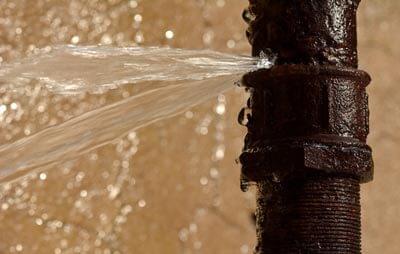Repair & Restoration After Frozen Pipe Damage
Dealing with frozen pipes in the winter is a common issue home and business owners face. Unfortunately, the aftermath can be costly. As temperatures plunge, water in pipes has a tendency to freeze and expand. This expansion puts tremendous pressure on metal or plastic pipes, causing pipes to burst and water to leak. These water leaks can cause significant damage to floors, carpeting, drywall, and fiberglass insulation. 
ServiceMaster Cleaning and Restoration offers immediate water damage clean up services in case you suffer from flooding due to frozen pipes. Our experts will know exactly what to do if you have frozen or burst pipes. We have the training, experience and equipment to help restore your property to pre-flood condition. Our services include moving and protecting your personal belongings, extracting excess water, rapidly drying the affected areas and reducing the risk of mold growth. We’re here for you 24/7 when you need emergency services fast.
Preventing Frozen Pipes During the Winter
Even when winter in Idaho is in full swing, there are still some things that you can do to help prevent pipes from freezing. Water pipes most likely to freeze include those that are located close to cold exterior walls, as well as pipes in unheated areas such as the basement, crawlspace and attic. As a precaution, consider adequately insulating these vulnerable water lines with pipe insulation such as heat tape or fiberglass.
Tips on how to avoid frozen pipes:
Remove, drain, and store outdoor hoses. Close inside valves supplying outdoor hose bibs, and make sure to keep your outside valve open so that any water remaining in the pipe can expand without causing the pipe to break.
Prevent drafts by closing all windows and air vents; seal gaps around exposed pipes.
Turn on faucets that are located near outside walls to allow both hot and cold water to trickle slowly.
Open cabinet doors under kitchen and bathroom sinks to let warm air circulate around the pipes.
Set the thermostat no lower than 55 degrees F during the day and night, even if you plan to be away for the day.
If your garage is attached to the house and has a water supply line, keep the door closed during the winter.
Check around your home for areas where water supply lines are located in unheated areas. (basement, crawl space, attic, garage, and under kitchen and bathroom cabinets)
Make sure pipes in unheated areas are properly insulated.
One of the first warning signs of a frozen pipe is reduced water flow or complete stoppage from a faucet.
Most likely places for frozen pipes include exterior walls and where your water service enters your home through the foundation.
How to Thaw Frozen Pipes:
Turn off the water valve and open the faucets. As you treat the frozen pipe and the frozen area begins to melt, water will begin to flow through the frozen area. Running water through the pipe will help melt ice in it.
Apply heat to the section of pipe using an electric heating pad wrapped around the pipe. You can also use an electric hair dryer or a portable space heater. Never use an open flame device.
Call a licensed plumber if you are unable to locate the frozen area or if the frozen area is not accessible.
How to Thaw Frozen Pipes:
A common cause of winter water damage to your home occurs when pipes freeze and hairline cracks develop. When the ice melts, water begins to flow again through these pipes and will exit these hairline cracks and flood the surrounding areas. Sometimes these pipes are hidden behind walls and the leak is not discovered until there has been significant damage done to your home.
If you have frozen pipes, you need to act quickly to prevent water damage to your structures and personal belongings. To minimize the damage, turn off the water at the main shutoff valve and call ServiceMaster Cleaning and Restoration to complete the cleanup. When it comes to frozen pipes, our experts are here to help restore your home when disaster happens.
(208) 524-8262

